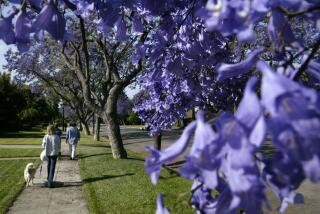Native Vegetation
I wish to chastise you for the poorly researched article by Hilliard Harper, “Freeze Dried Scrub Sparks Worry About Brush Fires” (June 6). This article perpetuated a number of falsehoods about our native vegetation.
Mr. Harper pejoratively refers to our chaparral vegetation variously as “scrub” or “brush,” perpetuating the myth that native vegetation is both ugly and unsafe. He incorrectly wrote that scrub oak is frost-sensitive when it is not. He confuses the sumacs, which are fire-resistant (lemonadeberry and sugarbush), with the one that is frost-sensitive and not fire-resistant (laurel sumac). Finally, the basic point of his article is that all native vegetation must be either removed or nearly cut to the ground in order to maintain an effective fire barrier.
The truth about fire control in chaparral vegetation is that vegetation management, not elimination, is the key. The two most important factors in the flammability of any vegetation are the amount of water in the tissues of the plant and the amount of dead wood the plant has accumulated.
Any fire management scheme should follow three phases: 1) the identification and preservation of species that are low fire hazards 2) the removal of all dead wood from existing vegetation and 3) the use of supplemental irrigation during the dry summer months to raise the water levels in the vegetation.
With a management program such as this, native vegetation can be preserved and enjoyed in a safe and attractive way.
BRAD BURKHART
Encinitas
More to Read
Sign up for Essential California
The most important California stories and recommendations in your inbox every morning.
You may occasionally receive promotional content from the Los Angeles Times.










